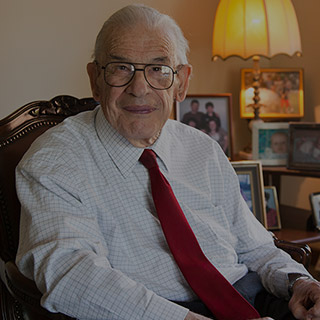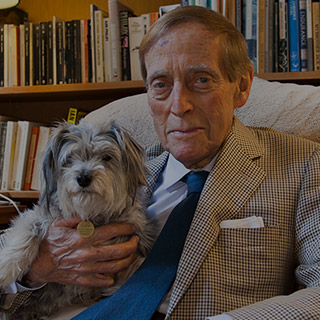Joseph Epstein
Resident medical officer, then general and emergency surgeon at Footscray 1966–present
Joseph Epstein was born in 1941. His family were European immigrants. He was educated at state primary schools and Melbourne High School before graduating from Melbourne University’s medical school.
After completing his junior residency at Footscray, he worked in Britain for several years before joining the hospital as a surgeon in 1976. Associate Professor Joseph Epstein is a founder of the Australasian College for Emergency Medicine. Western Health’s Joseph Epstein Centre for Emergency Medicine Research is named in his honour.
In 1998 he was awarded an AM in the Queen’s Birthday Honours for services to emergency medicine in Australia as a clinician, educator and administrator.
A junior resident’s life at Footscray
“When I was an undergraduate medical student in 1963 and ‘64, I’d done electives at Footscray. My most abiding impression of Footscray as a medical student was the enormous volume of road trauma patients because the Geelong Road was a single road, just a two-lane highway.
In 1966 I was appointed as one of the hospital’s junior resident medical officers. We worked 36 hour shifts – you worked a day, then the night and the next day.
The 36 hour shifts were a bit demanding. There were eight junior medical staff and only three went on to become seniors. In retrospect, it was a baptism of fire but I thought it was fantastic.
Those second year jobs were considered around Melbourne as wonderful training opportunities for young doctors going into general practice because you did everything – anaesthetics, obstetrics, everything. I remember delivering triplets as a second year resident.
The workload was very intense. One junior resident was responsible for one public medical ward of about 30 patients plus providing a backup for the honorary medical staff’s private patients on the other side of the hospital.
I was intending to go into general practice but because of the quality of a lot of the surgeons, people like Kendall Francis, Vernon Marshall and Bob Thompson, I became seduced by the idea of becoming a surgeon myself.”
Falling in love
“I fell in love with Footscray because of the clinical variability of the patients and the social variability of the patients. Every wave of migrants that came through Melbourne, came to live in the area.
The self-reliance of the hospital staff, the multicultural patient mix – were the things I loved about Footscray. I worked with outstanding clinicians. What was outstanding about them was not just their technical ability, but their attitude to life. They didn’t expect help, they made do with what they had.”
Living in
“As residents you lived at the hospital. In the building where the residents lived, the midwifery students were on the top floor. The nurses and nursing students lived in the building that is now the north block.
We used to go upstairs. It wasn’t policed. The director of nursing, Mavis Mitchell, didn’t inhibit any social contact between the doctors and nurses. She was lovely.
One year she arranged for me to be Father Christmas for all the kids at the hospital and I arrived in a helicopter on the north lawn.
There was a paediatrics ward there then. It was a true general hospital.
It had midwifery and obstetrics and paediatrics, as well as adult surgery and medicine. That was the reason why it was such fun to be there as a junior doctor.”
Part time mechanic
“There were no intensive care units in the late ‘60s, so intensive care was dealt with by the junior doctors. In 66-67 barbiturate overdoses, particularly phenobarbital, represented the biggest demand for intensive care.
As a junior resident you often found yourself looking after two or three patients unconscious from barbiturate overdoses.
The hospital didn’t have enough ventilators for overdose victims to be maintained until they recovered.
I wrote to the Bird Corporation in Palm Springs California because it made ventilators.
About a week later I got a phone call saying there’s a package down at the foyer for you. The Bird Corporation had delivered a huge crate with a ventilator and maintenance equipment, including the tools for a whole workshop. They’d sent it by Fed Express and just gave it to us.
So we set up a ventilator support workshop in the flat I was living in at the hospital. I did all the maintenance on the ventilator in the flat. There was no one else to do it – there were no equipment technicians – so if you didn’t do it, the work wasn’t done.”
Moonlighting as a locum
“In the late ‘60s, parts of Footscray, Yarraville, Williamstown and Newport were unsewered. We had an unofficial locum service run by the second year residents to support the GPs in the western suburbs.
I had an open car, an old English Ford Anglia tourer, and I used to drive round the western suburbs doing locums and home visits. It was an era before intensive and coronary care was available.
If you saw someone who had a heart attack, you would sit down and have a cup of tea with the family and say, ‘Maybe John will last the night and I’ll drop back in the morning’.”

